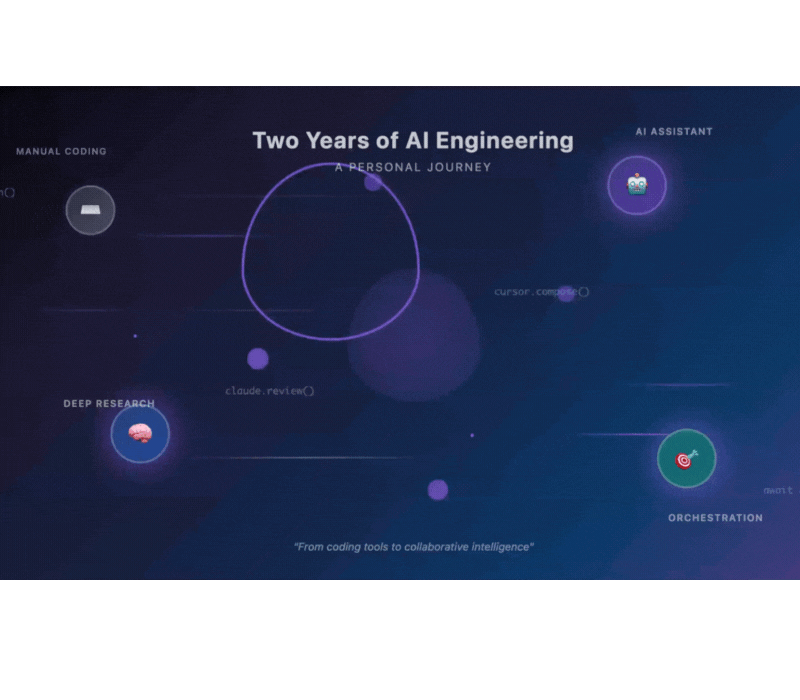Should you build it?
In the late 1990s, WebVan was going to transform the grocery business through online ordering and home delivery. But just a few years after being founded (and $1 billion in infrastructure investments) the company was bankrupt.
What happened?
A lot of mistakes were made. The case could be made that WebVan was simply too far ahead of its time. Given the popularity of online grocery ordering, pickup and even delivery today, it seems likely that WebVan paid a penalty for being too early.
But their biggest mistake was that they fell in love with their idea. Then they worked hard to make that idea a reality. A lot of really smart people held meetings and set budgets and timelines and executed their plans. They spent a tremendous amount of time and resources to pushing the idea forward and into the marketplace.
But there was something they didn’t do. They didn’t take the time to understand the market and the customer problem they were trying to solve. They didn’t test their product and validate their idea. They failed to realize that the market wasn’t quite ready for online grocery shopping. They created a well-developed product that failed to create enough interest to make it commercially viable.
Simply, they didn’t find the Product/Market Fit.
What is the Product/Market Fit?
In its time, WebVan was a cool idea. At the time, internet retailing was beginning to take shape, and WebVan wanted to do for groceries what Amazon was doing for books. It seemed like a cool idea, since people bought groceries far more frequently than books, and it had the potential to save people hours every week.
WebVan was built on its coolness. They wanted to find out if they could build a new business model. They never asked if they should.
When it comes down to it, people don’t care about coolness. They care about their needs and their problems. If a product or a company can solve their problems in a compelling way that they’re willing to pay for, that’s what’s cool.
That, in essence, is what Product/Market Fit is. Understanding the customer problem that needs to be solved, understanding the marketplace and people’s willingness to pay for a solution, and testing the product to find the right approach that can then be scaled. You know when you have Product/Market Fit when you start to see user adoption.
It’s asking, “Should we built it?” instead of “Could we build it?”
Had WebVan determined their Product/Market Fit before they scaled their operation with massive infrastructure investments, they would have seen their planned approach was doomed to fail. And they also might have pivoted to an approach that would have worked.
Maybe they would have uncovered some aspect of grocery shopping that annoyed shoppers or identified a certain segment of the market that was open to their service. Then they could have built their business accordingly.
It’s easy to look at the Dark Ages of 20 years ago and marvel at how foolish we all were. But companies of today are not immune to the same mistakes WebVan made.
The smartphone has spurred a digital revolution of which we’re still only seeing the beginning. Mobile technology has made it possible for users to be able to consume media, share content, interact with others, and purchase nearly anything from a convenient, handheld device. This has given rise to companies like Uber, Airbnb, and many others who continually raise the bar for functionality and user experience.
Entrepreneurs and Fortune 500 companies alike are bent on becoming the next Uber, disrupting industries or creating new ones. With so much energy and creativity and desire in the marketplace, and consumer expectations on the rise, there is a great deal at stake. This has made the fundamentals — Product/Market Fit — more important than ever.
How to find your product/market fit
Finding Product/Market Fit is the process of stepping back from your idea, understanding the customer problem you’re trying to solve, understanding the market’s desire for a solution, and testing prototypes to validate your ideas (or invalidate them and adjusting them).
It’s simple in concept, but requires discipline. It seems counterintuitive at times, and requires a decidedly unconventional approach compared to what most executives are used to. But it’s the best way to arrive at a product that is truly innovative and will be embraced by the market. If nothing else, it helps you avoid investing huge sums of money in something that will never work.
In future articles, we’ll discuss specific methods for finding your Product/Market Fit. But here are four basic principles that can guide you as you embark on this journey:
Don’t trust your own ideas
At Digital Scientists, we don’t trust our own ideas, nor do we trust our clients’ ideas. Why? While some of us may be a good fit for the product (we love using mobile apps as much as we love designing them), we’re too close to the product and too small as a group to give an accurate representation of the market. Customers, or the market, make the decision of whether your product will appeal to a large audience. And the market is always right.
Instead of getting too enamored with your ideas, find out what the market wants. Find a problem that’s not being solved in a satisfactory way. Let the market pull the product out of you, instead of pushing it out.
A key part of this is understanding the size of the market. How many people are suffering from the problem you’re trying to solve. It may seem obvious, but it’s a key piece of information in building a sustainable business, and it’s often missed.
This requires looking at the big picture, taking several steps back and asking “why” repeatedly, until you find the root cause of the customer problem. It’s not easy, and it might require some outside perspective, but it’s the most important step.
Validate, learn, repeat
Absent a clear understanding of Product/Market Fit, companies — from the largest corporations to mom & pops — will go to a designer and ask for a web site or an application. The project will get whittled down based on what functions are possible in the given time and budget.
Eventually, the application will be built, on time and on budget, and it will be deemed a success. And it will still fail. This is what happened at WebVan, on a massive, billion-dollar scale. These conventions companies follow, of setting timelines and budgets and execution plans, present artificial constraints, and they have no place in the process of innovation.
It seems counterintuitive, but the process of finding the Product/Market Fit may require you to go over budget and past your timeline. It’s an iterative process characterized by creating, testing ideas, validating (or invalidating), learning, adjusting, and repeating.
That’s because you never know what the market will tell you. It might be trying to pull a product out of you that you never imagined. Putting a timeline on it will most likely cut it short before you arrive at the solution.
While the thought of going over budget may seem frightening, remember that it will still be a fraction of going all in to launch a product that’s fully developed, but not the right fit for the market.
Launch and test an MVP
The Minimum Viable Product, or MVP, is one of the best ways to develop and launch a prototype and find the Product/Market Fit. It involves creating a product in fairly rapid fashion, complete with bugs, glitches and other problems, and unleashing it on a test market to see if it works.
That’s another frightening thing for many entrepreneurs and executives: the idea of putting out a product that doesn’t have all of the features and functions that were initially envisioned. But what the MVP does is gets the product in the hands of potential customers quickly. That, in turn, leads to faster feedback and allows you to make adjustments quickly, and based on real-user information.
That will give you the proof you need to determine what features users truly want and will use, and move on to the next phase of development.
Build, execute, scale…or abandon
Once you have proof that the product will work and understand how the market wants it. Then your job is to execute — build, scale, market your product.
You can proceed with confidence, because by determining your Product/Market Fit, you know what your growth engine will be. You know who your customers are, what’s important to them, and how they are going to use your product.
You know this because you will have tested and adjusted, tested and adjusted, pivoted, adjusted, and tested again. You’ll know that you can and should continue to develop the product.
Or, you may not. You may not find the Product/Market Fit. The market may keep telling you, no matter what changes you make, that it doesn’t want that product. Certainly, that’s not what you want to hear, but it’s better than hearing the voice of a bankruptcy lawyer.
There are no guarantees, of course, but knowing you have found the Product/Market Fit gives you confidence. Confidence that you have the basis for a product that people will use and can be scaled, possibly to become a stand-alone business. Confidence from knowing your product enhances people’s lives through simplification, enjoyment, utility or purpose.
Confidence comes from knowing you aren’t pursuing an untested idea because the market told you it delivers real value.



